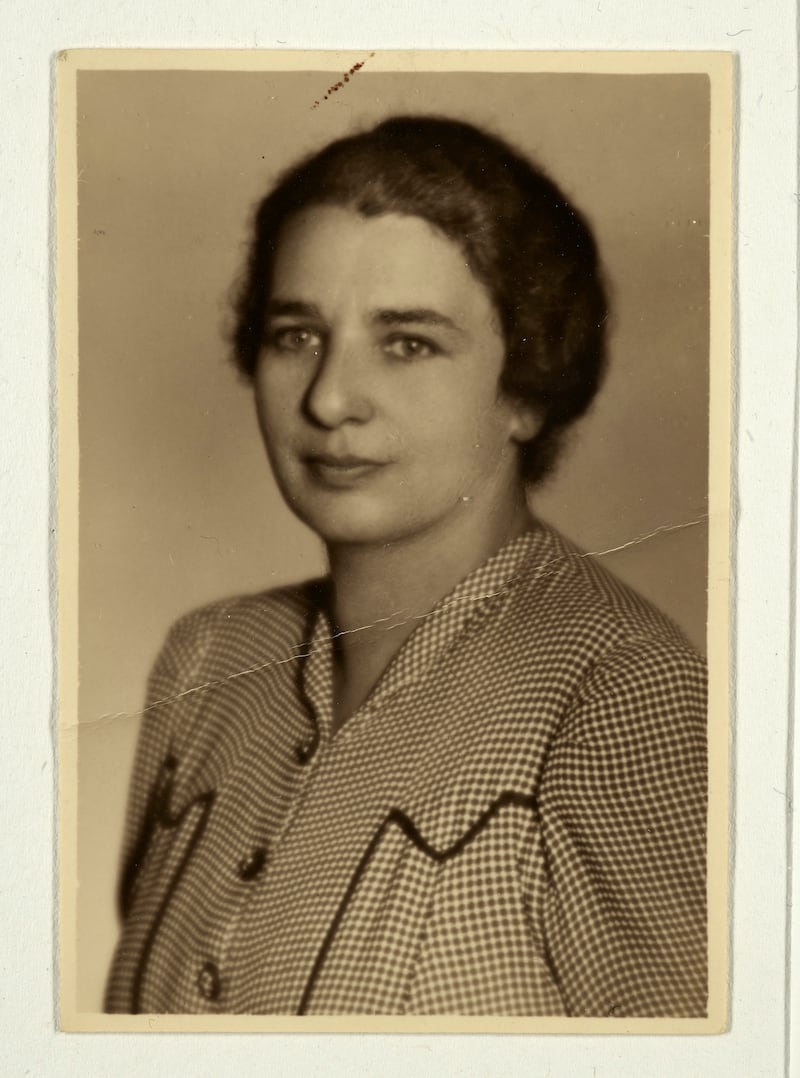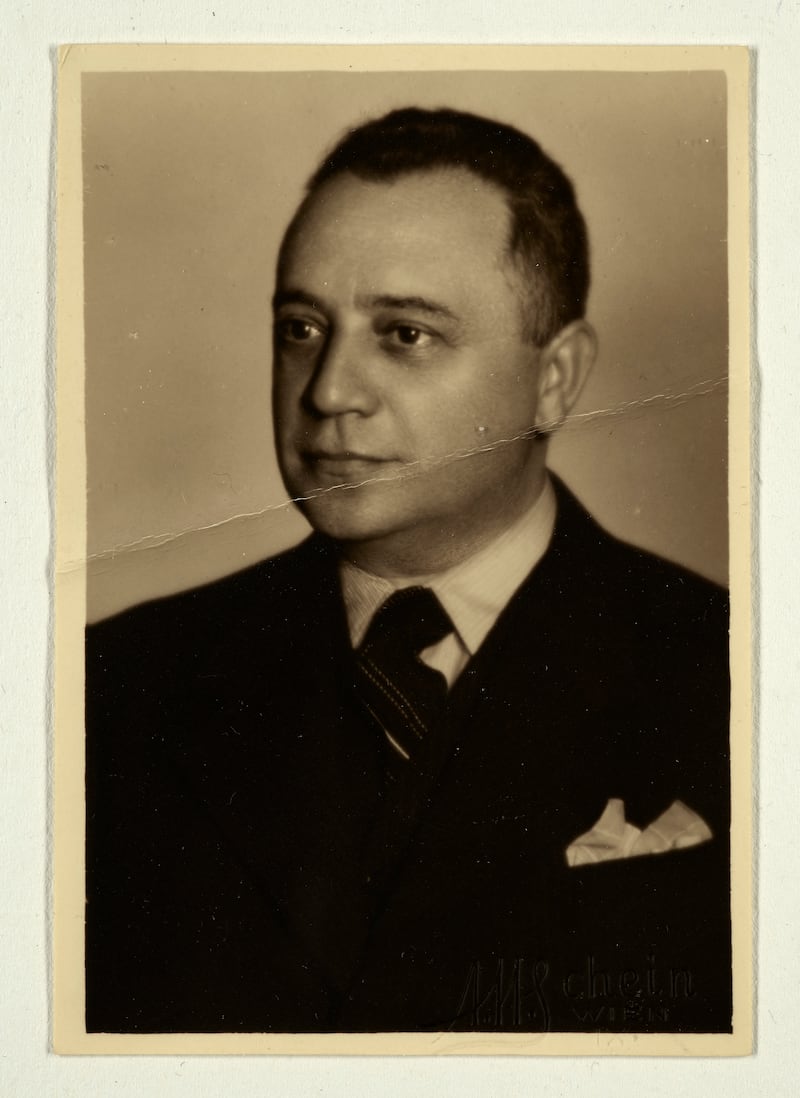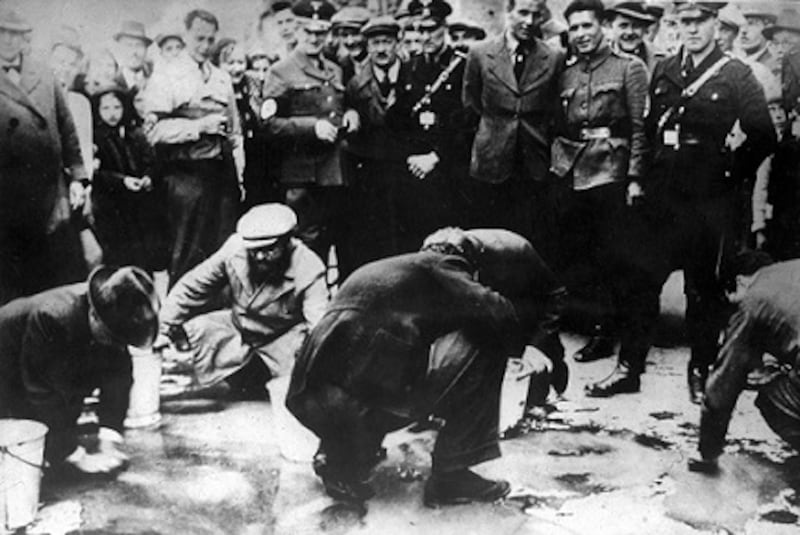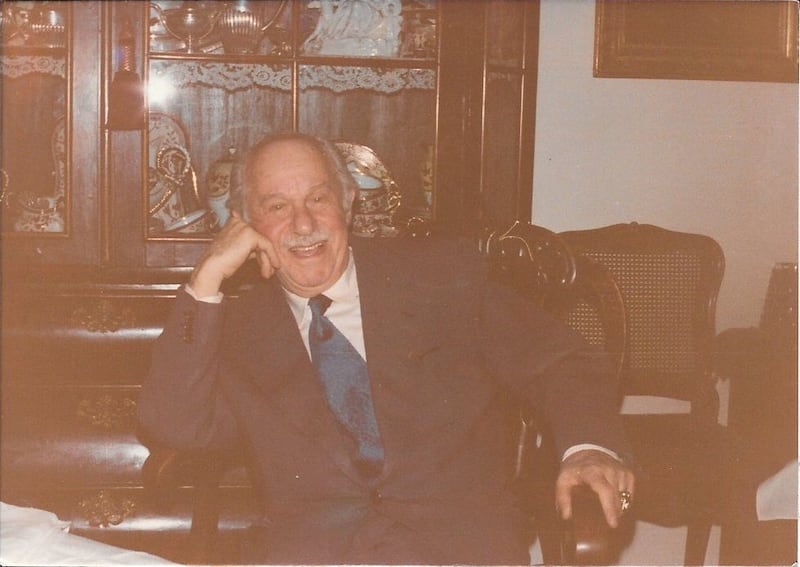While Ireland and Britain struggle to deal with an influx of migrants, with hundreds of victims drowning in their attempts to reach England’s shores, few know about the efforts of hundreds of Austrian Jews to flee Nazi terror under a Northern Ireland government scheme in 1938.
The project was not an altruistic policy, but an attempt to deal with the North’s chronic unemployment. The New Industries (Development) Act offered financial aid to employers who could create jobs for some of the 91,000 unemployed, the highest figure since Northern Ireland was created in 1921. Local take-up was underwhelming, and applications from outsiders were considered.
A key figure in the story is a man sometimes described as the North’s Oskar Schindler, an Austrian Jew called Alfred Neumann, who rescued 70 fellow Jews from Nazi-controlled Vienna, but just two years later was deported by the British as an “enemy alien” and killed in a U-boat attack.
In August 1938, he opened a small factory in Newtownards, Co Down, with six skilled professionals from Vienna. Three weeks later, a two-paragraph news item about the Stormont scheme appeared in a Jewish newspaper in Vienna. Immediately, hundreds of Viennese Jews applied for entry to Northern Ireland, hoping to escape the intense persecution they had suffered since the Anschluss, the Nazi invasion in March 1938.
READ MORE
The SS and Austrian Nazis had launched a wave of violence against the country’s Jewish community of 180,000. Jews were attacked and humiliated on the streets of Vienna and sacked from their jobs. Families were evicted from their homes and jammed together in cramped apartments in a ghetto. Five thousand Jews were deported to Dachau between May 2nd and June 20th, 1938. The brutality was so savage on one transport that 12 Jews died before the journey ended.

At first, all seemed to be going well for Alfred Neumann in Northern Ireland. With a Derry businessman, David Gilfillan, he opened a second factory in the city in November 1938. His good fortune soon changed. He was sacked over apparent differences with his staff at Newtownards and funding was withdrawn there by early 1939.
Neumann was interned as an enemy alien in December 1939. In June 1940, after the fall of France, a German invasion seemed possible and the United Kingdom began deporting aliens, mainly to Canada and Australia. Alfred Neumann was among the Austrians, Italians and Germans on board the former luxury liner Arandora Star when it sailed from Liverpool for Canada on July 1st, 1940, but a German U-boat sank it 125 miles off the northwest coast of Ireland the next day, with the loss of 800 men. Bodies were washed up on the west of Ireland and Scotland, but Neumann’s was never found.
They would have been very happy to settle down in Belfast. They were refused
Of the 730 people mentioned in the 300 files of letters to the ministry of commerce in Belfast, at least 600 were rejected, and of these, 125 fell victim to the Nazis. One-third of Vienna’s Jewish population – 65,000 men, women, and children – were murdered in the Holocaust. The methods developed there, the “Vienna Model” became the template for the persecution and extermination of Jews throughout occupied Europe.
Neumann had tried to bring to Derry a group of 11 Viennese Jews seeking to join 16 relatives working for Gilfillan and Neumann, the factory he had established with the Derry businessman. Among them was Willy Ehrenstein, aged 25, who wanted to join his fiancée, Lily Weinstein.

While some managed to get to Derry, Ehrenstein could not get out of Vienna. He was forced into the city’s Leopoldstadt ghetto, where he lived until deported in September 1942 to Theresienstadt, a former Habsburg garrison town in Czechoslovakia.
Overcrowded, filthy, and dangerous, it became a ghetto for 140,000 Jews, many of them elderly. Epidemics of typhoid and other diseases periodically swept through the ghetto, killing thousands. But the biggest danger of all was deportation to one of the Nazi extermination camps. Ehrenstein was deported to Auschwitz in September 1944. He stayed there just 11 days before being deported to Dachau.

In January 1945, he was among 835 Jews deported to Leitmeritz, which was only five kilometres from Theresienstadt, opened in March 1944 by the SS to make tank engines. Conditions were so bad in the underground caverns that it was known by prisoners as “the death factory”. Altogether 4,500 of the 18,000 prisoners who passed through the camp died from “disease, malnutrition, and accidents”. Ehrenstein’s forced odyssey through the concentration camps ended when he died a month after his arrival on February 6th, 1945.
Willy’s fiancée Lily Weinstein’s life took a different course. In June 1940, she married in London and gave birth to a daughter. The family emigrated to the United States three months after the child’s birth.
One-third of Vienna’s Jewish population – 65,000 men, women, and children – were murdered in the Holocaust. The methods developed there became the template for the persecution and extermination of Jews throughout occupied Europe
One industrialist, Walter Weiniger, got out of Vienna and linked up with two Czech brothers, Alfred and Jacob Utitz, to run a tannery at Shrigley, Co Down, which at its peak employed 400 workers. Weiniger was joined by his wife, Mary, and two children in 1939. But his parents, Salomon and Gisela, and brother Ernst and partner Grete were trapped in Vienna.
In the hope of getting his relatives out, Ernst Weiniger contacted a man called Fried to try to move money abroad, which he thought would help him get precious visas. Fried was arrested by the Gestapo, who were soon on Ernst’s trail. One day two Gestapo men arrived at his flat, but Ernst was out. He later returned to save his parents and was remanded to Moabit Prison in Berlin on suspicion of treason, which was a capital offence, and currency charges.
He was tortured to make him sign a confession indicting others for the same crimes, but he refused. He was held in solitary confinement and tortured again by the SS. After a year, one of his co-accused was sentenced to death and two others jailed, Ernst wrote later in a memoir, but miraculously he was freed because of lack of evidence. In March 1942, he found out that the Gestapo had taken up his case again. He secretly left the hospital and went underground until liberation in 1945.
Others who applied under the New Industries Act in 1938 were not so lucky. Alfred Bermann (64) sought an entry permit for his son Otto (29), who had been imprisoned for six months in a concentration camp.
“I beg you very much to be so kind to procure him a post anywhere and to render it possible for him to obtain the permission, for this would be the only possibility to get him free,” Alfred wrote. “The unhappy old parents of this young man beg you very much to be so kind to grant their request and are waiting for your kind answer.” He received no reply.
Alfred Bermann and his wife Mathilde were transported to Theresienstadt in July 1942. Alfred died there in September, and Mathilde was deported to Treblinka the same month and murdered there. Their son Otto survived the war and died in Canada in July 1964.

Otto Kisch (49) applied for visas for himself, his wife Hertha (42) and daughter Vera (8). He said he had worked in the shoe and slipper trade for 30 years and could found a slipper factory or work for one. “The famous Vienna fashion and style no doubt also appreciated in your country will certainly prove an asset and give a new impulse to your markets,” he wrote. His wife was “an excellent household manager and an expert in culinary art [and] would also be capable and ready to establish a cooking school, a confectioner’s shop or the like.” They would have been very happy to settle down in Belfast. They were refused.
The family were deported to Riga, in Latvia, on January 1st, 1942, and moved to the nearby concentration camp of Jungfernhof. Otto was murdered in March 1942. Highly unusually, his wife Hertha and daughter Vera survived. After the war, Hertha applied from New York for compensation to the Austrian government.
Nearly 4,000 Jews from Vienna, Nuremberg, Stuttgart and Hamburg were transported to the Jungfernhof camp from late November 1941 onwards. Only 148 of those taken to the camp were still living at the end of the war.
The Saved and the Spurned: Northern Ireland, Vienna and the Holocaust, by Noel Russell, is published by New Island Books.
- Sign up for push alerts and have the best news, analysis and comment delivered directly to your phone
- Join The Irish Times on WhatsApp and stay up to date
- Listen to our Inside Politics podcast for the best political chat and analysis




















